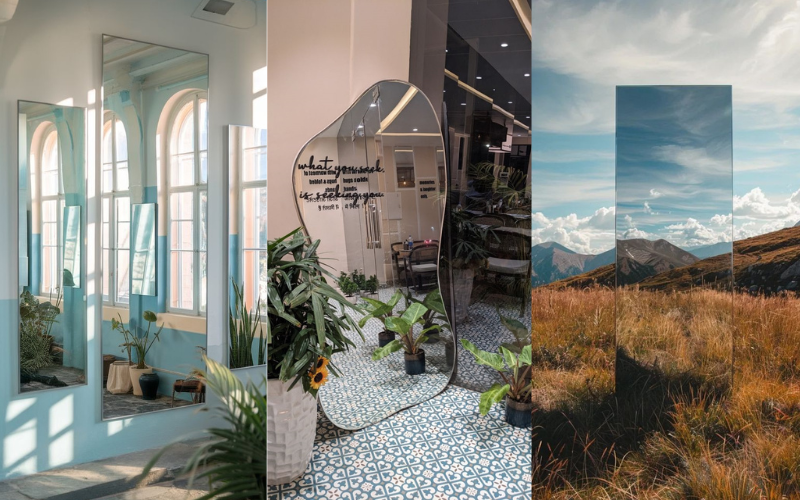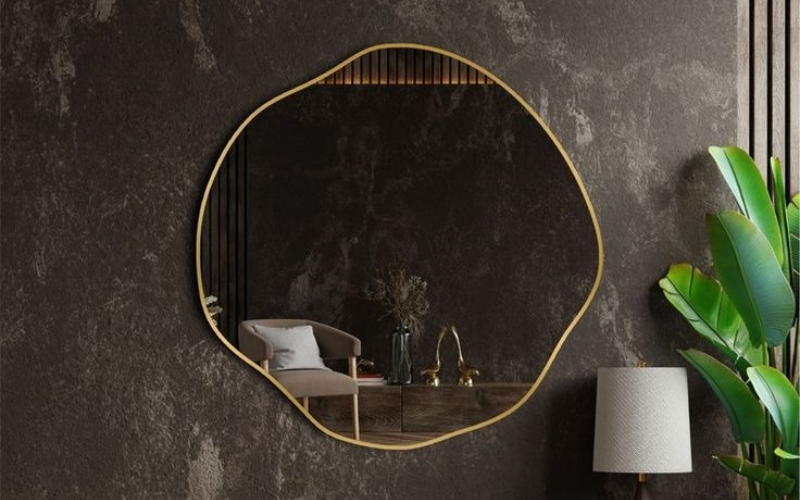Mirror: The Silent Hero in Design by the Buzz Expert

When people talk about transforming a space, the conversation almost always begins with color palettes and lighting schemes. These are, without a doubt, powerful tools for setting the mood of a room. But there is another element that quietly works behind the scenes and that’s a mirror.
As interior designer Mr. John explains, “Far beyond being a simple tool to check your reflection, mirrors have the ability to influence how a space feels, functions, and is perceived.” They can change how light moves, alter proportions, and even add personality to interiors. Whether it’s a cozy home, a small café, or a large commercial setting, mirrors hold design potential that often goes unnoticed.
Mirrors are like the supporting actors in a movie, you don’t always notice them right away, but without them, the whole story feels incomplete.
1. Amplify Light, Maximize Space
One of the most common and effective uses of mirrors in design is to amplify natural light. When placed strategically, a mirror can bounce sunlight deeper into a room, brightening areas that might otherwise feel dull or shadowed. This creates an immediate sense of openness and freshness.
“In smaller apartments or compact commercial spaces, this technique becomes even more valuable. By reflecting light and visually extending the walls, mirrors give the illusion of a larger area, without the need for structural changes,” says Mr. John.
People underestimate how much mirrors can change the mood of a space. In a small living room, one large mirror can make it feel like you’ve added another five feet of depth.

2. Frame the Perfect View
Mirrors also have the power to enhance focal points. “Imagine an art piece, a plant wall, or even a scenic window view reflected back and suddenly – your space feels richer and more dynamic,” says Mr. John.
In a living room, a well-placed mirror can reflect a cozy fireplace, making it visible from more angles. In a café, it can capture the greenery from an outdoor seating area, bringing a touch of nature indoors.
Mirrors can show you the best part of a space from an entirely new angle. “Sometimes the reflection is more interesting than the actual object.”
3. Add Layers of Luxury
Mirrors are not just functional; they can be aesthetic statements in themselves. Their frames, shapes, and finishes can add texture, depth, and personality to a room. An antique gold-framed mirror brings a sense of timeless elegance, while a frameless, edge-to-edge mirror offers modern sophistication.

“Used thoughtfully, they can be as impactful as an art installation,” notes Mr. John. A large mirror leaning casually against a wall can create an effortlessly stylish vibe. Smaller decorative mirrors arranged in a pattern can act as an installation piece.
A Daily Companion
While mirrors have an important role in interior design, they also quietly serve us in our everyday routines. We glance at them before leaving home, adjust our hair, or check our outfit. Sometimes, a passing reflection catches our eye unexpectedly, reminding us of our presence in the moment.
There’s a small ritual in these interactions – a quick glance, a subtle gesture, a moment of self-connection. Mirrors, in a way, are silent companions that are always there, reflecting not just our image, but a part of our daily lives.
A Quick Reflection
We check a mirror to style our wear,
A quick glance, a moment to care.
Reflections as we walk by,
A silent friend that catches the eye.
In the world of design, mirrors deserve more credit than they usually receive. They are practical, beautiful, and adaptable – capable of brightening spaces, framing views, and adding a touch of luxury without overwhelming a room. Beyond that, they are part of our day-to-day life, offering moments of reflection both literally and figuratively.
As Mr. John sums it up, “Mirrors are the only design element that can change a room without adding anything new, they simply make you see what’s already there, in a better light.”
So next time you step into a room and feel a certain lightness, spaciousness, or quiet elegance, look around. Chances are, a mirror is working its quiet magic in the background.
About Author
John D. Tamang is the Founder & CEO of both Group of Interior Architects (GIA) (Lazimpat-02) and Brush & Strokes (Uttardhoka). He also serves as a lecturer at the British Academy of Arts and Design (BAAD) in Ratopool. He completed his studies in 2019 from IEC College of Arts and Fashion.
Instagram: groupofinteriorarchitects

Also Read
More Than A Look — Mahek Shrestha
Hotel Yak & Yeti Launches ‘The Great Indian Biryani Trail’ at Spice Room
En Vogue XI Finalists: Nepal’s Next SuperModel




























